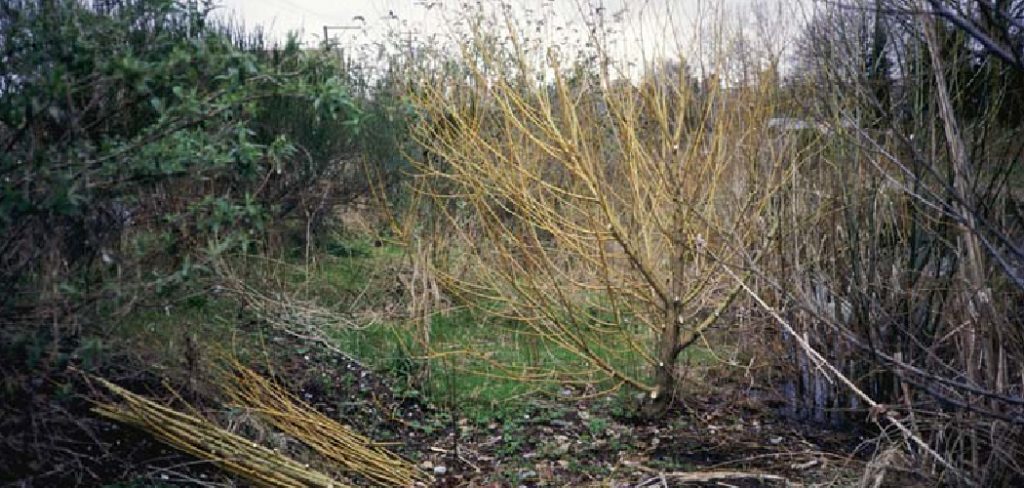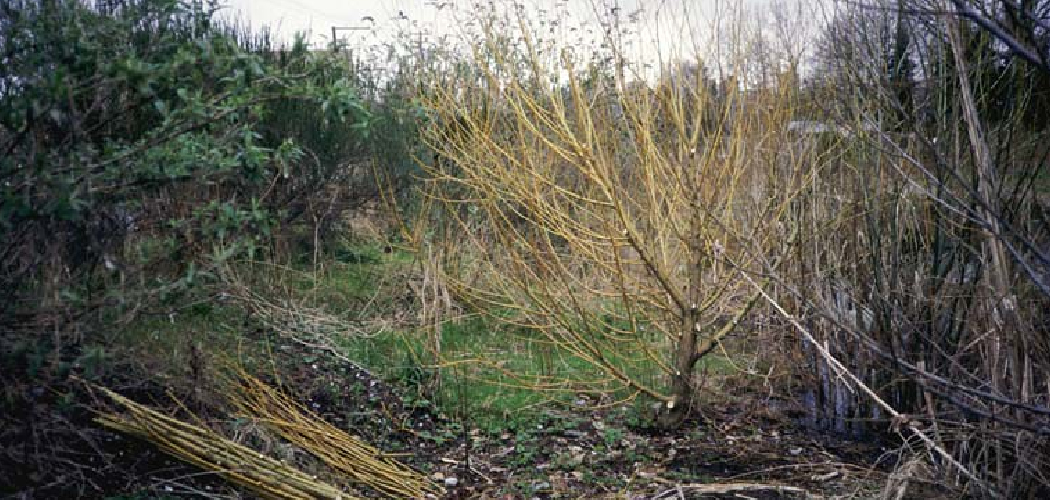Control willow by regular pruning and removing new growth, cutting out dead or diseased branches, and using herbicides as necessary. Willow control is essential to prevent invasive growth and maintain a healthy landscape.

With proper care and maintenance, you can effectively manage and control willow in your outdoor spaces.
Understanding The Willow Problem
The willow problem is a common issue faced by many homeowners and landowners. Willows can be problematic due to their rapid growth and invasive nature. These trees can have a significant environmental impact, often outcompeting native plants and disrupting ecosystems. Willow growth can lead to increased sedimentation and erosion along streams and rivers, affecting water quality and habitat for other species.
Controlling willows can be challenging due to their ability to regenerate from cuttings and root fragments. Traditional control methods such as cutting, burning, or herbicide application may provide temporary relief but often require ongoing management. It is crucial to implement a comprehensive control strategy that includes a combination of physical, chemical, and biological methods.
Physical methods, such as cutting and removal of willow stems, can be effective in reducing willow populations. Herbicides specifically targeted at willows can also be used, but caution must be exercised to minimize impacts on non-target species. Additionally, biological control options such as the introduction of willow-specific insects or pathogens may provide long-term solutions.
Understanding the willow problem and its environmental impact is crucial for effective control. By implementing a holistic approach and using a combination of control methods, it is possible to manage willows and restore the natural balance of ecosystems.
How to Control Willow : Step by Step Guide
Identifying Different Types Of Willows
Identifying different types of willows involves recognizing common species and understanding their distinguishing characteristics. Willows are trees known for their long, slender leaves and flexible branches. They are often found near bodies of water and in moist environments. Some common species of willows include the white willow, black willow, pussy willow, and weeping willow.
When identifying willows, it is important to note their unique features. Willows have elongated leaves with serrated edges and a pointed tip. The leaves are typically green in color, but some species may have silver or grayish foliage. The branches of willows are often droopy and flexible, giving them a distinct appearance.
One way to differentiate willows from similar plants is by their catkins. Catkins are long, slender flower clusters that hang from the branches. Willows produce catkins in the spring, which can be either male or female. Male catkins are usually yellow and release pollen, while female catkins are green and contain the plant’s seeds.
Evaluating Your Willow Control Options
Evaluating Your Willow Control Options
Chemical Control Methods:
| Selecting the appropriate herbicide for willow control | Application techniques and considerations | Safety precautions and environmental concerns |
Mechanical Control Methods:
- Manual removal techniques
- Cutting, mowing, and pruning strategies
- Equipment recommendations for willow removal
Biological Control Methods:
- Introducing natural predators and pathogens
- Utilizing grazing animals for willow management
- Implementing biocontrol measures effectively
Controlling willow can be achieved through various methods: chemical, mechanical, and biological. Chemical control methods involve the selection and appropriate application of herbicides, considering techniques, safety precautions, and environmental concerns. Mechanical control methods include manual removal techniques, cutting, mowing, and pruning strategies, as well as recommended equipment for willow removal. Biological control methods involve introducing natural predators and pathogens, utilizing grazing animals, and effectively implementing biocontrol measures. Understanding and evaluating these options will help you in effectively managing willow and maintaining the desired landscape.
Best Practices For Willow Control
When it comes to controlling willow, there are several best practices that can help you effectively manage its growth. Timing your control efforts is crucial for maximum success. Willow control works best when undertaken during the winter months when the plants are dormant. This allows for easier access and removal of the willows. It is important to develop an integrated approach to control, combining manual removal, chemical treatment, and regular maintenance to ensure long-term effectiveness.
Monitoring and evaluating control success is essential to track the progress of your efforts. Regularly assess the area for any regrowth of willows and take appropriate action if necessary. Keep a record of the control methods used, their effectiveness, and any changes in the willow population over time. This will help you refine your control strategy and achieve better results.
Case Studies: Successful Willow Control Stories
Effective willow control strategies are crucial for managing willow growth and preserving the environment. Real-life experiences have provided valuable lessons and inspiring success stories in willow management. These examples can guide landowners, conservationists, and researchers in their efforts to control willow growth effectively.
One notable case study involves the use of targeted herbicide applications. By identifying the specific willow species and applying the appropriate herbicide at the right time, landowners successfully subdued willow growth without harming native vegetation.
Another successful strategy is the mechanical removal of willows through cutting or mowing. This method proved effective in preventing willow expansion and regrowth, allowing native vegetation to thrive in the affected areas.
Additionally, strategic grazing is a nature-based method that utilizes livestock to control willows. Grazing animals selectively consume willow shoots and prevent further growth. This environmentally friendly approach has shown promising results in several locations.
In conclusion, these case studies provide valuable insights into effective willow control strategies. By understanding the different methods available and considering their suitability to specific environments, we can manage willow growth effectively and maintain a balance between conserving our natural ecosystems and human land use needs.
Future Challenges And Innovative Approaches
Emerging Technologies in Willow Control
Controlling willow poses various challenges, but innovative approaches and emerging technologies have shown promise in this area. Ongoing research and developments in the field have paved the way for more sustainable solutions.
One promising approach is the utilization of emerging technologies. These advancements offer new methods for willow control that are more effective and environmentally friendly.
Research and development efforts have focused on identifying and implementing these innovative approaches. Scientists and experts are exploring various techniques to combat willow growth and spread, such as genetic modification, targeted herbicides, and biological control methods.
Looking ahead, sustainable willow control is attainable through continued research and the adoption of these promising solutions. By addressing future challenges and embracing emerging technologies, we can make significant progress in controlling willow and preserving our natural ecosystems.
Frequently Asked Questions On How To Control Willow
What Herbicide Kills Willows?
Glyphosate herbicide effectively kills willows and is an ideal choice for controlling their growth.
What Will Kill Water Willow?
Water willow can be killed by using herbicides specifically designed to target and eliminate it.
How Do You Control A Weeping Willow?
To control a weeping willow, prune regularly to manage its growth and shape. Remove dead or diseased branches using sharp tools.
How Do You Control Willow Tree Roots?
Control willow tree roots by cutting them regularly and removing any root suckers that appear.
Conclusion
Controlling willow trees can be a challenging task, but with the right knowledge and techniques, it is possible to manage their growth effectively. Regular pruning is crucial to maintain the desired shape and size of the tree, while ensuring that light can reach the lower branches.
Additionally, strategic tree removal may be necessary in cases of overgrowth or encroachment on nearby structures. It is important to dispose of the cut branches properly to prevent further reproduction. Another effective method is chemical control, where targeted herbicides can be used to kill off unwanted willow growth.
However, it is essential to follow the instructions carefully and be mindful of potential environmental impacts. Whether through physical or chemical means, proper and proactive management of willow trees can help maintain the beauty and functionality of your landscape. So take charge and control willow trees today!

